-
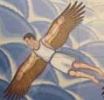
Daedalus - Poznavalec foruma
- Prispevkov: 1951
- Pridružen: To sep 02, 2008 6:00 pm
Re: iz 256mm na 312mm diske - rabim nasvet
Načeloma bi sam tudi rekel, da vkolikor lahko bremzaš na mejo oprijema gum, ni važno kako veliki so diski (kar se tiče zavorne poti). Večji diski ti namreč NE morejo izboljšat oprijema gum in pika.
-

_furby_ - Mojster foruma
- Prispevkov: 4178
- Pridružen: Sr mar 21, 2007 12:39 am
- Kraj: Ankaran
Re: iz 256mm na 312mm diske - rabim nasvet
mam se jaz eno vprasanje, ze ki se govori o pregrevanju.
na moji Corsi (D GSi) imam problem, ko mi po malo bolj hitri voznji in mocnejsem zaviranju (raceland, razni prelazi) tko smrdi iz bremz da je groza. vrjeno ni ravno nedolzno to pregrevanje
kako to najbolje preprecit?
na moji Corsi (D GSi) imam problem, ko mi po malo bolj hitri voznji in mocnejsem zaviranju (raceland, razni prelazi) tko smrdi iz bremz da je groza. vrjeno ni ravno nedolzno to pregrevanje
kako to najbolje preprecit?
turbo inside
-

primozek68 - Poznavalec foruma
- Prispevkov: 1983
- Pridružen: Če dec 18, 2008 8:50 pm
Re: iz 256mm na 312mm diske - rabim nasvet
kako to najbolje preprecit?
Naj vozi kdo drug, če ti ne znaš?
Sex turns gay people into Mexicans.
-

_furby_ - Mojster foruma
- Prispevkov: 4178
- Pridružen: Sr mar 21, 2007 12:39 am
- Kraj: Ankaran
Re: iz 256mm na 312mm diske - rabim nasvet
primozek68 je napisal/-a:kako to najbolje preprecit?
Naj vozi kdo drug, če ti ne znaš?
ce ti pravis da ne znam, pol je vrjetno to to.
turbo inside
-

Surts - Nov uporabnik
- Prispevkov: 33
- Pridružen: To okt 12, 2010 8:18 am
Re: iz 256mm na 312mm diske - rabim nasvet
Če prav razumem, obstaja velika verjetnost da se motim in me v tem primeru popravite, zaviramo s trenjem.
Sila trenja deluje v nasprotni smeri kot je smer gibanja in je produkt normalne sile in koeficienta trenja. Fora trenja je da pretvarja mehansko energijo(gibanje) v notranjo(toploto).
V tem primeru imamo za zaustavitev vozila dva glavna trenja, se pravi med pnevmatiko in podlago in zavorno ploščico in diskom(še seveda zanemarimo lastno trenje).
Očitno prime pločica ob disk bolje kot pnevmatika na podlago(ima večji koeficient trenja), kar pomeni da ne potrebujemo večjih diskov(naprimer se nam prej vklopi abs ali pa guma zdrsne). Glavni problem pa je pregrevanje diska, kar pa privede v slabše delovanje oz. nedelovanje trenja med ploščico in diskom. Kar pa lahko rešimo z uporabo večjih diskov.
Dejstvo je da je koeficient trenja neodvisen od velikosti stične površine(pomeni da imaš lahko poljubno velike diske in se zaradi tega ne boš nič prej ustavil, saj bo koeficient venomer enak).
Razumevanje zadnjega stavka je ključnega pomena.
Pomeni da za boljšo zaustavitev potrebujemo boljši koeficient trenja, kar pa lahko dosežemo s pravilno izbiro materialov(dobrih diskov in ploščic in kvalitetnih gum).
P.S.: Prosim ne me zdaj vprašat zakaj pa se hitreje zaustavimo če imamo večje(širše) pnevmatike. Ker odgovora ne vem, lahko pa se najde junak im me razsvetlji.
Sila trenja deluje v nasprotni smeri kot je smer gibanja in je produkt normalne sile in koeficienta trenja. Fora trenja je da pretvarja mehansko energijo(gibanje) v notranjo(toploto).
V tem primeru imamo za zaustavitev vozila dva glavna trenja, se pravi med pnevmatiko in podlago in zavorno ploščico in diskom(še seveda zanemarimo lastno trenje).
Očitno prime pločica ob disk bolje kot pnevmatika na podlago(ima večji koeficient trenja), kar pomeni da ne potrebujemo večjih diskov(naprimer se nam prej vklopi abs ali pa guma zdrsne). Glavni problem pa je pregrevanje diska, kar pa privede v slabše delovanje oz. nedelovanje trenja med ploščico in diskom. Kar pa lahko rešimo z uporabo večjih diskov.
Dejstvo je da je koeficient trenja neodvisen od velikosti stične površine(pomeni da imaš lahko poljubno velike diske in se zaradi tega ne boš nič prej ustavil, saj bo koeficient venomer enak).
Razumevanje zadnjega stavka je ključnega pomena.
Pomeni da za boljšo zaustavitev potrebujemo boljši koeficient trenja, kar pa lahko dosežemo s pravilno izbiro materialov(dobrih diskov in ploščic in kvalitetnih gum).
P.S.: Prosim ne me zdaj vprašat zakaj pa se hitreje zaustavimo če imamo večje(širše) pnevmatike. Ker odgovora ne vem, lahko pa se najde junak im me razsvetlji.
-

=swen= - Uporabnik
- Prispevkov: 810
- Pridružen: To okt 14, 2008 3:04 pm
- Kraj: gorenjska
Re: iz 256mm na 312mm diske - rabim nasvet
Surts je napisal/-a:Dejstvo je da je koeficient trenja neodvisen od velikosti stične površine...
P.S.: Prosim ne me zdaj vprašat zakaj pa se hitreje zaustavimo če imamo večje(širše) pnevmatike. Ker odgovora ne vem, lahko pa se najde junak im me razsvetlji.
To imaš prav, vendar velja le za toga telesa.
Guma ni togo telo ampak je elastična, deformabilna. Zato je trenje večje v primeru širše pnevmatike.
Citirano iz nekega drugega foruma:
The school physics books tell you that the coefficient of friction is a constant, but in reality this is an oversimplification. In the case of tyres, the coefficient of friction drops off as you increase the weight on the wheel. This is why you can tune a car's handling by adjusting the anti-roll bar, and also why you *can't* tune with anti-roll bars if the load on the tyres is too small (the vehicle is overtyred).
Because of this, the bigger the contact patch the more grip you can get. In a drag race, dropping the tyre pressure increases the contact patch area and increases grip. Even on road bikes you will see people dropping the tyre pressure to almost nothing for the absolute maximum grip down the strip.
BUT, when you look at lateral grip (side force) other factors start to matter. The tyre develops side force because of the slip angle between the tyre and the road. This slip angle means the tread is being pulled sideways by the road surface. At the front of the contact patch the deflection is relatively small. As you move back along the contact patch the deflection increases steadily. At some point, the sideways forces in the tyre exceed the friction between the tread and the road and the tread starts to slip relative to the road. When the tread is slipping like this it produces less grip on the road. Now imagine increasing the slip angle and imagine what effect this has on the side force. As the slip angle increases the sideways deflection builds up quicker so the front of the contact patch works harder. But more and more of the back of the contact patch is sliding and losing grip. At some point you reach a maximum point where more slip angle means less side force because you are losing more grip at the rear of the contact patch that you are gaining at the front. This is often referred to as 'breaking away' where you ask the tyre for more grip and end up getting less.
The longer the contact patch is, the more gradually this break away occurs. If you shorten the contact patch, the break away occurs more abruptly but you get more absolute grip at the peak. This is because there is less variation in sideways distortion between the front and back of the contact patch, more of the contact patch reaches maximum grip and starts to slide at the same point. Having a shorter contact patch also means you get less self-aligning torque so there is less feedback through the steering about how close the tyres are to breaking away.
When you fit wider tyres, what you're doing is making the contact patch wider and shorter for the same tyre pressure. This means you get a more abrupt breakaway but more grip right on the limit. The disadvantage is more expensive tyres, more tramlining and steering kickback, more wind and rolling resistance and noise, less grip in slippery conditions, a more abrupt breakaway to catch out the unwary driver and less warning through the steering about how close the tyres are to breaking away.
-

nevermind - Poznavalec foruma
- Prispevkov: 2836
- Pridružen: To jun 16, 2009 2:49 pm
Re: iz 256mm na 312mm diske - rabim nasvet
_furby_ je napisal/-a:primozek68 je napisal/-a:kako to najbolje preprecit?
Naj vozi kdo drug, če ti ne znaš?
ce ti pravis da ne znam, pol je vrjetno to to.primozek almighty nas vse prebere ze preko a.com
Vsaketoliko ima neke prebliske. Očitno mu baba ni že dolgo dala.
-

primozek68 - Poznavalec foruma
- Prispevkov: 1983
- Pridružen: Če dec 18, 2008 8:50 pm
Re: iz 256mm na 312mm diske - rabim nasvet
Giggle giggle fap fap.
Sex turns gay people into Mexicans.
-

King1 - Mojster foruma
- Prispevkov: 4317
- Pridružen: Po mar 10, 2008 6:06 pm
- Kraj: Vzhodno od Domžal
Re: iz 256mm na 312mm diske - rabim nasvet
primozek68 je napisal/-a:
Naj vozi kdo drug, če ti ne znaš?
O primožek primožek mogoče veš kdaj bo bolje?
lp
-
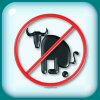
Skull23 - Poznavalec foruma
- Prispevkov: 2128
- Pridružen: Po okt 14, 2002 11:28 am
- Kraj: Kolomban
Re: iz 256mm na 312mm diske - rabim nasvet
primozek68 je napisal/-a:to da se ne splača govorijo samo tisti ki niso še nikoli tega probali..
Sej ne de ABF-a z leskovo palico ustaviš. Ne splača se, pa konec.
pa v kakšnem smislu se ne splača? finančnem?
- R 34 GT-R
- Uporabnik
- Prispevkov: 1371
- Pridružen: Ne maj 06, 2007 10:16 pm
- Kraj: Najlepša dolina
Re: iz 256mm na 312mm diske - rabim nasvet
Skull23 je napisal/-a:to da se ne splača govorijo samo tisti ki niso še nikoli tega probali...
word
RiDe hArD
-
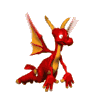
tristan01 - Poznavalec foruma
- Prispevkov: 2673
- Pridružen: Če apr 15, 2004 5:28 pm
- Kraj: Štajerska
Re: iz 256mm na 312mm diske - rabim nasvet
Surts je napisal/-a:Če prav razumem, obstaja velika verjetnost da se motim in me v tem primeru popravite, zaviramo s trenjem.
Sila trenja deluje v nasprotni smeri kot je smer gibanja in je produkt normalne sile in koeficienta trenja. Fora trenja je da pretvarja mehansko energijo(gibanje) v notranjo(toploto).
V tem primeru imamo za zaustavitev vozila dva glavna trenja, se pravi med pnevmatiko in podlago in zavorno ploščico in diskom(še seveda zanemarimo lastno trenje).
Očitno prime pločica ob disk bolje kot pnevmatika na podlago(ima večji koeficient trenja), kar pomeni da ne potrebujemo večjih diskov(naprimer se nam prej vklopi abs ali pa guma zdrsne). Glavni problem pa je pregrevanje diska, kar pa privede v slabše delovanje oz. nedelovanje trenja med ploščico in diskom. Kar pa lahko rešimo z uporabo večjih diskov.
Dejstvo je da je koeficient trenja neodvisen od velikosti stične površine(pomeni da imaš lahko poljubno velike diske in se zaradi tega ne boš nič prej ustavil, saj bo koeficient venomer enak).
Razumevanje zadnjega stavka je ključnega pomena.
Pomeni da za boljšo zaustavitev potrebujemo boljši koeficient trenja, kar pa lahko dosežemo s pravilno izbiro materialov(dobrih diskov in ploščic in kvalitetnih gum).
P.S.: Prosim ne me zdaj vprašat zakaj pa se hitreje zaustavimo če imamo večje(širše) pnevmatike. Ker odgovora ne vem, lahko pa se najde junak im me razsvetlji.
Tvoja teorija je skoraj pravilna. Pozabil si omeniti še stično površino med diskom in zavorno oblogo. Ta je pri večjih diskih in primerno velikih zavornih oblogah precej večja, kot serijsko. S tem se doseže večje trenje in zato boljše zaviranje, seveda ob pogoju, da imaš primerno predelan celoten zavorni sistem. V nasprotnem primeru sledi pumpanje zavornega pedala preden se zavore odzovejo. Z večjimi zavorami dosežeš še eno pomembno prednost. Diski se zaradi večje mase počasneje segrevajo/pregrevajo, kar je posebej pomembno pri serijah močnih zaviranj (kombinacija več ostrih zavojev ali pista). Ob vsem pa se je treba zavedati, da vsaka veriga je močna toliko kot najšibkejši člen. V tem primeru je potrebno pomisliti tudi na gume, ki silo zaviranja/pospeševanja prenašajo na cestišče. Velikokrat se dogaja, da so zavore dovolj zmogljive, gume pa pri močnih zaviranjih ne zdržijo. Precej pomagajo že gume malce boljšega proizvajalca, še bolj pomembno pa je da so primerne dimenzije (tudi preširoke ne koristijo).
Osebno sem mnenja, da večina današnjih avtomobilov ponuja več kot zadovoljivo zmogljive zavore za vsakdanjo rabo, pa tudi za kakšen izlet na dirkališče. In dokler ni avtomobilu moč precej zvišana ni potrebe po večjih zavorah. Ekstremne razmere in vozniki izvzeti.
Lp Tristan01
Iskalec resnice in modrosti. Lahko si videl svojo prihodnost. Ostali so te dojemali kot idealista, ki jim sveti pot do lepše prihodnosti.
Naloga, ki si jo prinesel iz prejšnjega življenje:
Dovršitev tvoje naloge s pomočjo starejšim in otrokom. V prejšnje življenje si prišel z namenom pomagati ubogim in nemočnim.
Naloga, ki si jo prinesel iz prejšnjega življenje:
Dovršitev tvoje naloge s pomočjo starejšim in otrokom. V prejšnje življenje si prišel z namenom pomagati ubogim in nemočnim.
-

primozek68 - Poznavalec foruma
- Prispevkov: 1983
- Pridružen: Če dec 18, 2008 8:50 pm
Re: iz 256mm na 312mm diske - rabim nasvet
Da strnem:
Off:
furby: za raceland ne rečem, tam se išče meje zmogljivosti. Po gorskih cestah pač zaviraš z motorjem in pomagaš z zavorami, ne navijaš po Vriču dol v 3. brzini, ker pol si durh na bremzi. Vsaj meni niso nikoli smrdele bremze ne na Vršiču, Sustenpassu, Mangartu, ipd. Edina rešitev v tvojem primeru je namestitev drugih čeljusti in kolutov z večjim premerom za manj pregrevanja. Tako kot je Abbe napisal.
Off:
furby: za raceland ne rečem, tam se išče meje zmogljivosti. Po gorskih cestah pač zaviraš z motorjem in pomagaš z zavorami, ne navijaš po Vriču dol v 3. brzini, ker pol si durh na bremzi. Vsaj meni niso nikoli smrdele bremze ne na Vršiču, Sustenpassu, Mangartu, ipd. Edina rešitev v tvojem primeru je namestitev drugih čeljusti in kolutov z večjim premerom za manj pregrevanja. Tako kot je Abbe napisal.
Sex turns gay people into Mexicans.
-
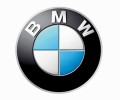
Bat_zajla - Stalni uporabnik
- Prispevkov: 505
- Pridružen: Če dec 09, 2010 10:32 pm
Re: iz 256mm na 312mm diske - rabim nasvet
Saj to je logično, da bo enako močno bremzalo. Že avto z najmanšimi diski, ti blokira kolesa. Bo kaj drugače blokiralo, če bi dal večje diske? Ne nebi! Največja prednost večjih diskov je ravno to, da jih lahko dalj časa obremenjuješ, preden nehajo delovati.
-

_furby_ - Mojster foruma
- Prispevkov: 4178
- Pridružen: Sr mar 21, 2007 12:39 am
- Kraj: Ankaran
Re: iz 256mm na 312mm diske - rabim nasvet
primozek68 je napisal/-a:furby: za raceland ne rečem, tam se išče meje zmogljivosti. Po gorskih cestah pač zaviraš z motorjem in pomagaš z zavorami, ne navijaš po Vriču dol v 3. brzini, ker pol si durh na bremzi. Vsaj meni niso nikoli smrdele bremze ne na Vršiču, Sustenpassu, Mangartu, ipd. Edina rešitev v tvojem primeru je namestitev drugih čeljusti in kolutov z večjim premerom za manj pregrevanja. Tako kot je Abbe napisal.
kot prelaze sem imel v mislih Stelvio (tam sem jih do polovice spusta osmodil, pa ceprau smo vozili normalno in zavirali z motorjem)
vecje zavore ne bi ravno gor tlacu, ker so ze sedaj po mojem mnenju velike. spredaj 308mm, zadaj 264mm. bo treba bolj narahlo bremzat
turbo inside
-
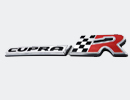
splash - Poznavalec foruma
- Prispevkov: 2352
- Pridružen: To nov 16, 2004 9:27 pm
Re: iz 256mm na 312mm diske - rabim nasvet
KAKŠNO POF*KANO ZNANOST IN KREGARIJO SE GRESTE, KER MI S TEM NIČ NE POMAGATE! 
v bistvu sem odgovor na vprašanje dobil že v prvem postu ki je bil idan za mano, tko da se lahko tema tudi zaklene
v bistvu sem odgovor na vprašanje dobil že v prvem postu ki je bil idan za mano, tko da se lahko tema tudi zaklene
-

Skull23 - Poznavalec foruma
- Prispevkov: 2128
- Pridružen: Po okt 14, 2002 11:28 am
- Kraj: Kolomban
Re: iz 256mm na 312mm diske - rabim nasvet
dobil si odgovor, to pa ne pomeni da je to kar tam piše res...
- drmocar
- Stalni uporabnik
- Prispevkov: 578
- Pridružen: Če feb 26, 2004 6:06 pm
Re: iz 256mm na 312mm diske - rabim nasvet
Potem pa ti mojster povej kaj od napisanega ni res? 
-
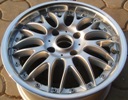
denko4 - Novinec
- Prispevkov: 378
- Pridružen: Pe sep 04, 2009 9:54 pm
- Kraj: dolenjske benetke
Re: iz 256mm na 312mm diske - rabim nasvet
abbe je napisal/-a:bl je vazn materjal kot pa velikost.jst sm mel 288 pa mam zj gor 312.nobene razlike razn v tem da se tezje pregrejejo,se pa vseen pregrejejo.
ploscica je pri obeh velikostih enaka oz je kar ista ploscica...materjal je bol pomembne kot velikost.itak je pa vsaj za moje pojme najbolj vazna guma
Kaj potem boš rekel da ročica nima nobene veze pri bremzanju? Ti si pa en opasni fizik
Ploščice so pa večinoma pri isti znamki avtomobila res iste.
-

Skull23 - Poznavalec foruma
- Prispevkov: 2128
- Pridružen: Po okt 14, 2002 11:28 am
- Kraj: Kolomban
Re: iz 256mm na 312mm diske - rabim nasvet
drmocar je napisal/-a:Potem pa ti mojster povej kaj od napisanega ni res?
recimo to da moraš menjat zavorni cilinder.
jaz sem šel iz enobatnih na dvobatne, iz dvobatnih na štiribatne, pol sem še zadaj večje čeljusti zmontiral, in je vse delovalo tako kot je treba. je pa res da je lahko odvisno od sistema. na tem sistemu ki ga imam jaz vem da folk daje tudi 360 diske gor pa 8 batne čeljusti in obdržijo vedno original zavorni cilinder.
Kdo je prisoten
Po forumu brska: 0 registriranih uporabnikov in 2 gostov
